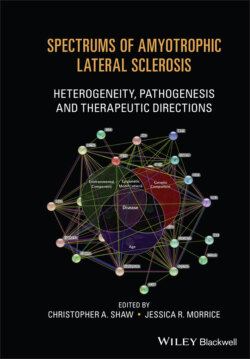Читать книгу Spectrums of Amyotrophic Lateral Sclerosis - Группа авторов - Страница 15
Classic ALS, LMN Form, and UMN Form
ОглавлениеBy definition, ALS is characterized by a combination of LMN and UMN clinical and electrophysiological signs. However, the relative mix of UMN and LMN impairment is highly variable among patients, and clinical manifestations of ALS exist on a continuum whose extremes are represented by cases showing pure LMN dysfunction on one side and cases with pure UMN signs on the other side. Classic ALS (Charcot type) is the most frequent form, accounting for about 70–90% of cases, and is characterized by predominant LMN signs combined with slight to moderate pyramidal signs. Patients with pure LMN signs without any accompanying clinical or electrophysiological UMN signs are labeled as having progressive muscular atrophy (PMA) and represent about 5–10% of cases. However, the demonstration that UMN pathology is present at autopsy in 50% of PMA patients indicates that, in at least some cases, pyramidal signs are simply masked by LMN dysfunction on both clinical and electrophysiological grounds. For this reason, the presence of preserved but not hyperactive reflexes in atrophic limbs should be interpreted as UMN impairment. PMA and ALS are not distinct entities, as they show significant phenotypic and genetic overlap. About 2–5% of patients with motor neuron disease show a pure pyramidal form with predominant spino‐bulbar spasticity, known as primary lateral sclerosis (PLS). The onset of PLS is generally after 40 years, and the disease duration is significantly longer than in classic ALS. A small proportion of PLS patients develop a clear ALS phenotype, usually within three to four years from the onset, while others show only minimal LMN impairment; most cases remain PLS for decades. ALS patients with predominant pyramidal signs consisting mainly of severe spino‐bulbar spasticity are said to have upper motor neuron‐dominant amyotrophic lateral sclerosis (UMN‐D ALS). These signs are associated with slight LMN signs, usually in the hands. This phenotype is frequent in the young‐adult group and males, and it has a better prognosis than classic ALS [8–10].
